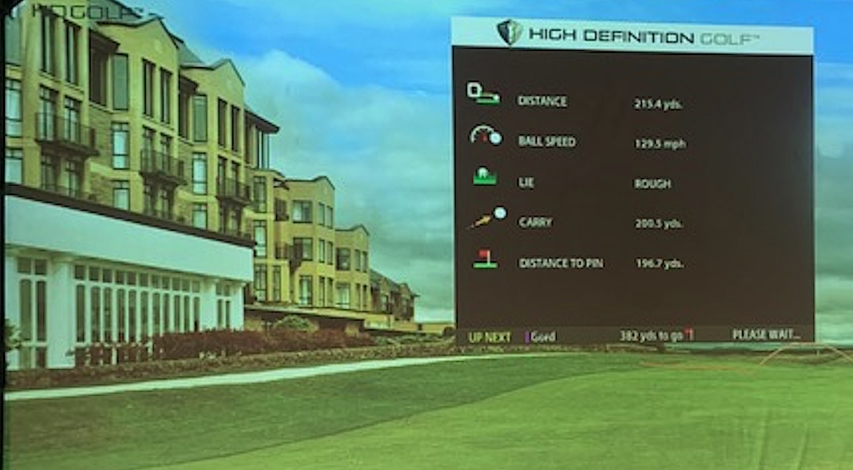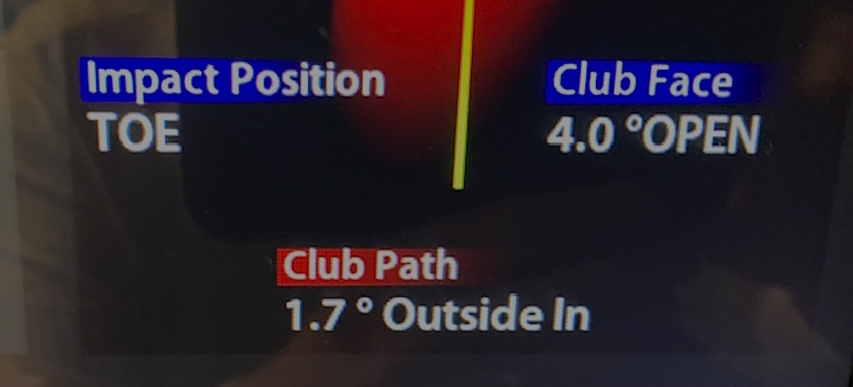Does SIM Golf Transfer To Your Outside Game?
- Details
- Category: Inside Golf
- Published: 2023-02-09

By Gord Montgomery, Inside Golf
SPRUCE GROVE, Alberta — Say what you want about some of the shortcomings of simulator golf, but it does serve a purpose in improving our outdoor game. That’s the word coming from a man who should know, Ryan Latta, a former CPGA professional who is now the manager of an indoor golf facility. Asked point-blank if he would use this sort of game improvement technology himself, Latta didn’t hesitate to say yes and point out the positives. But, he agreed, a few negatives lurk around as well.
On the plus side, he listed off a variety of topics — a player could easily analyze their swing; the weather’s always good; you can easily see your ball’s flight pattern; carry and roll yardages are readily accessible; a round of 18 holes is quick; there is the ability to practice specific shots with instant feedback; the ball position is always perfect; and of course, there’s the mental and physical well-being one derives from the activity. And you’re keeping your swing in shape.
Leading the way in the downside category was the two-dimensional aspect of the simulator; putting and chipping issues; there are no weather issues with wind, rain, and humidity; and the fact you always have a perfect lie for your next shot. And of course, turf conditions, which are always perfect indoors.
So, as you can see, the good outdistances the bad in a simulated game.
Said Latta about the plus side of indoor golf: “The good thing about simulator golf is you have the ability to personally analyze your own swing,” and if you’re not sure about an aspect of the data provided, don’t hesitate to ask. “There’s a difference between hitting a driver on the range or a driver on the simulator. You have an advantage on a simulator because you can see the club path, your swing speed, [and] the club face angle at impact — things that you can’t analyze on a driving range. That’s a huge benefit.

On-Screen Graphics Help Golfers Understand Distances & Speed Of Each Shot, Plus Show Yardage To The Hole No Matter Where Your Ball Ends Up. (Photo by Gord Montgomery)
“Another thing is you’re not affected by weather indoors. A lot of times when you’re practicing outside, [the] weather affects your swing. With a simulator, you can appreciate what’s happening with your swing as opposed to guessing. It helps people better understand their game.”
“Time-wise it is absolutely a bonus,” as one person can easily play 18 holes in an hour or less.
“Comfort is another thing,” Latta continued. “While not everybody may be watching you on a driving range, you are visually open to everybody,” while at most indoor locations, you are in a bay that is closed in.
“You also have the ability to practice different shots and different shot types. On a range, you’re just hitting off a mat while here indoors, you can actually set up different scenarios.”
“Then there’s the mental and physical health and I want to bring this up because it’s a big positive. Muscle memory is a key factor [in] a complete and consistent swing. And mental health, you’re keeping your mind fresh and that’s a big benefit health-wise.”
Switching gears, Latta looked at the negative side of the indoor golf game and, yes, there are a few. But, in the end, not enough to dissuade people from teeing it up on a simulator.
Leading the way of course is that realistically, no matter what club you’re using, the ball only travels a few yards before it hits the screen. But that is essentially beside the point because the SIM’s brains take over from there. Where Latta works, at On Par Golf & Lounge in Spruce Grove, they use the HD Golf system that employs six high-speed cameras set into the screen.

Further Information About One’s Swing, Good Or Bad, Is Shown On The Console In Order To Help Players Work On & Improve Their Game. (Photo by Gord Montgomery)
“There are downsides, to be honest with you,” he began. “I’ve been in the business for about two years now, coming from outdoors, and one of the hardest things inside is the ability to digest the short game. We don’t have the ability to visualize the surface of the green. The touch game is very, very different. Indoors, we’re aiming at a spot on the green to get to the flag [whereas] outdoors, you’re mapping in a different way to get to that pin whether it’s a bump-and-run, which is way more effective outdoors than it would be here. And putting for sure is a very visual difference. A lot of people do struggle with putting the first couple of games they play as you’re hitting into a screen rather than an area of the green. That’s the chatter I hear from new players, as well as players that have been around for a bit. The short game can be a bit challenging; not a disappointment, but a challenge.”
“Another thing that’s tougher to digest is course management. You don’t have any conditions with indoor golf. Traditionally here, we run with firm fairways and softer greens but outside, you’re going to face many different course conditions. That’s the one thing you can’t work around indoors,” although he did add later that elevation changes on the indoor courses are quite realistic.
And finally, on the negative side of things, Latta noted that indoors you always have a perfectly flat lie. On most simulators, there are no sidehill, downhill, or uphill lies even though the visuals presented show that to be the case. And as well, it’s far easier to escape a bunker and deep rough inside because most machines can’t really capture the true strain of escaping a punishing predicament.
So all in all, the indoor game’s benefits outweigh the negatives. And Latta notes, you can transfer those skills learned inside to the great outdoors, which is not a bad thing at all.
Oh, and there is one other ‘good’ thing about SIM golf: You never, ever lose a (real) golf ball!



